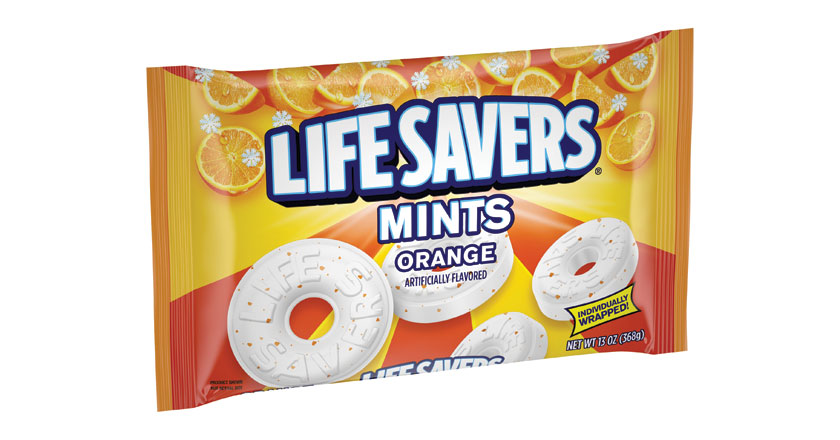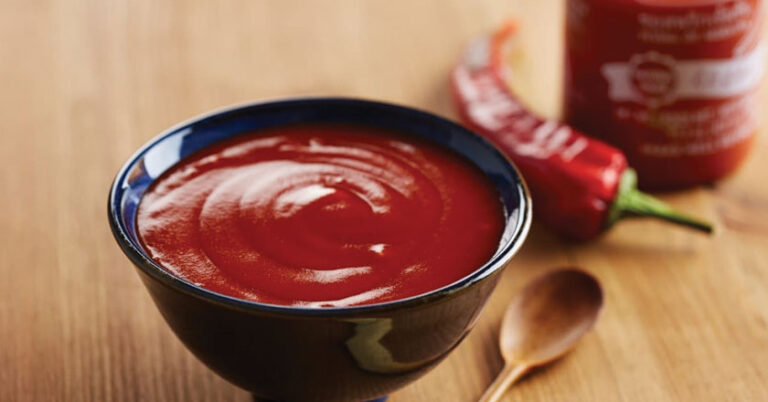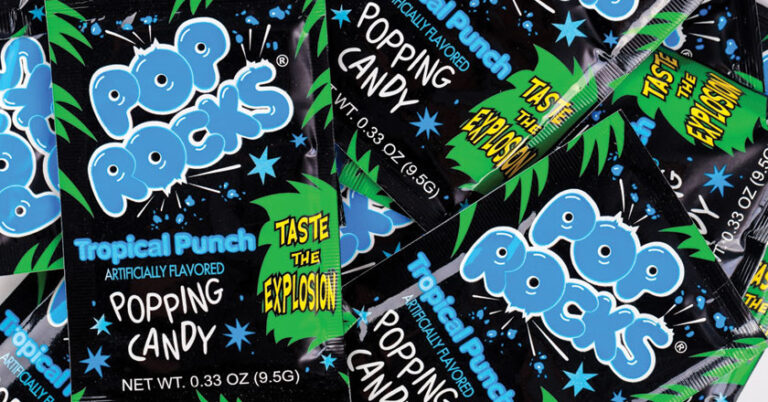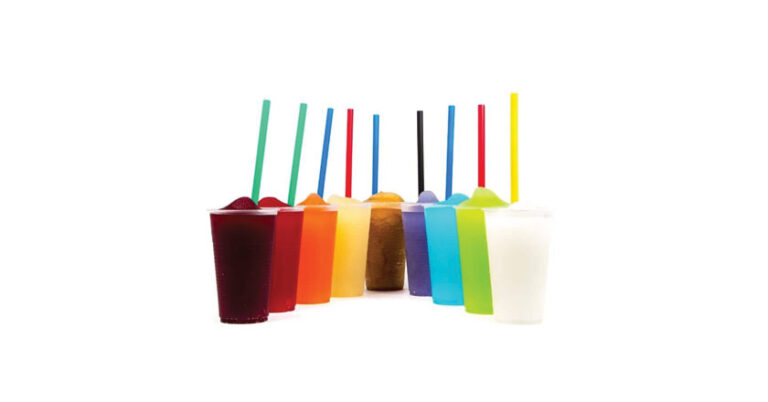Are Lifesavers Mints Gluten-Free?
Yes, Lifesavers Mints are generally gluten-free, making them a suitable choice for those with gluten sensitivity or celiac disease. Enjoy them in moderation for fresh breath.
As a health-conscious individual with a taste for mints, you might be wondering if Lifesavers Mints fit into your gluten-free lifestyle. In this article, we’ll explore the gluten-free status of Lifesavers Mints, examine their nutritional values, discuss the benefits, potential risks, and provide ideas for incorporating them into your gluten-free recipes. Let’s dive in!

What is Gluten Free?
A gluten-free diet excludes gluten, a protein found in wheat, barley, and rye. This dietary choice is vital for individuals with celiac disease or gluten sensitivity to prevent health complications.
Are Lifesavers Mints Gluten-Free?
Yes, Lifesavers Mints are generally considered gluten-free. However, it’s always advisable to check the packaging for any specific gluten-related warnings or changes in ingredients.
Nutritional Values of Lifesavers Mints
| Nutrient | Value (Per 100 grams) |
| Calories | 390 kcal |
| Carbohydrates | 97 grams |
| Protein | 0 grams |
| Fiber | 0 grams |
| Fat | 0 grams |
Benefits of Choosing Lifesavers Mints
- Fresh Breath: Lifesavers Mints are a quick and effective way to freshen your breath.
- Convenient: They come in handy rolls, making them easy to carry in your pocket or purse.
- Sugar-Free Options: Some Lifesavers Mints are available in sugar-free versions for those watching their sugar intake.
- Variety of Flavors: Lifesavers Mints offer a wide range of flavors to suit different preferences.
Risks of Choosing Lifesavers Mints
- Sugar Content: While sugar-free options exist, regular Lifesavers Mints can contribute to sugar consumption if consumed in excess.
- Overconsumption: Like any candy, moderation is key to avoid excessive calorie intake.
How to Incorporate Lifesavers Mints in Your Gluten-Free Recipes?
While Lifesavers Mints are primarily enjoyed as standalone treats, you can crush them and sprinkle them on top of gluten-free desserts like ice cream or cakes for added flavor and a hint of sweetness.
Common Misconceptions About Lifesavers Mints and Gluten
Some individuals mistakenly believe that all candy contains gluten, but Lifesavers Mints, in general, are gluten-free unless otherwise indicated on the packaging.
Can Lifesavers Mints Cause Coeliac Disease?
No, Lifesavers Mints do not cause coeliac disease. They are safe for individuals with gluten sensitivities.
Additional Tips
- Enjoy Lifesavers Mints in moderation as part of a balanced diet.
- Be aware of sugar content and choose sugar-free options if necessary.
How Many People Have Gluten Sensitivity?
It is generally accepted that one in 133 people have celiac disease, a genetic condition causing intestinal damage due to gluten, found in wheat, barley, and rye. However, the concept of non-celiac gluten sensitivity is still being researched and is yet to be universally accepted in the medical field. Researchers estimate that gluten sensitivity may affect between 0.6% to 6% of the population, but definitive research is still pending. Dr. Alessio Fasano, a prominent researcher in the field, estimates that gluten sensitivity may affect 6 to 7% of the U.S. population, potentially impacting around 20 million people in the United States alone. Symptoms of gluten sensitivity can include digestive problems, headaches, rashes, brain fog, and fatigue. Some researchers, like Dr. Rodney Ford, speculate that the actual percentage of gluten-sensitive people could be much higher, potentially between 30% and 50%. Dr. Kenneth Fine, founder of the gluten sensitivity testing service Enterolab, agrees that gluten sensitivity probably affects half the population. However, these potential percentages are speculative, and more research is needed to confirm them.
Global Prevalence of Celiac Disease
 Image source: Celiac Disease Foundation
Image source: Celiac Disease Foundation
Why are people opting for gluten-free diets?
The motivations are varied and significant. A substantial 48% choose gluten-free due to celiac disease, 31% due to gluten intolerance, and 8.4% due to other autoimmune diseases. Beyond medical necessities, many are seeking to manage gastrointestinal pain (80%), alleviate nausea (62%), combat fatigue (57%), and mitigate joint pain (40%). These varied reasons highlight the multifaceted appeal of gluten-free living, from managing medical conditions to seeking overall well-being.
Are there any benefits of Gluten?
Yes, there are some potential benefits of gluten, especially for people who can tolerate it. Gluten is a good source of protein, fiber, and some vitamins and minerals.
Protein: Gluten is a complete protein, meaning that it contains all nine essential amino acids that your body cannot produce on its own. Protein is important for building and repairing muscle tissue, as well as for producing hormones and enzymes.
Fiber: Gluten is a good source of both soluble and insoluble fiber. Soluble fiber helps to lower cholesterol levels and reduce the risk of heart disease. Insoluble fiber helps to keep the digestive system healthy and regular.
Vitamins and minerals: Gluten-containing whole grains are a good source of some vitamins and minerals, including B vitamins, iron, and magnesium.
In fact, for people with celiac disease or gluten sensitivity, eating gluten can be harmful. Celiac disease is an autoimmune disorder in which the body reacts to gluten by attacking the lining of the small intestine. Gluten sensitivity is a condition in which people experience symptoms such as bloating, gas, diarrhea, and fatigue after eating gluten, even though they do not have celiac disease.
Age Demographics of Gluten-Free Diseases
However, this gender discrepancy was predominantly observed in individuals diagnosed after the age of 14, with no substantial gender difference noted in diagnoses at or below 14 years of age. These insights reinforce the widely held belief that women are more susceptible to gluten intolerance, especially in their adult years, providing a deeper understanding of the gender-specific nuances of this condition in relation to our broader exploration of gluten intolerance.
Male vs. Female Stats on Gluten Intolerance
In exploring the intricacies of gluten intolerance, it’s crucial to delve into the disparities between male and female experiences with this condition. A meticulous study was conducted to scrutinize the prevailing notion that women are more commonly diagnosed with gluten intolerance than men, especially focusing on variations in age and gender. The study encompassed data from 1,436 patients, diagnosed between January 1975 and August 2001, to discern any significant gender-based differences in gluten intolerance diagnoses.
The findings of the study were quite revealing, showcasing a female-to-male ratio of 2.3:1 in gluten intolerance diagnoses, substantiating that women are indeed more prone to gluten intolerance, particularly when diagnosed in adulthood. A significant correlation was found between adult women diagnosed with gluten intolerance and the manifestation of iron-deficiency anemia, occurring in 34% of the cases, as opposed to a mere 7% in men.
FAQs
Are all Lifesavers Mints gluten-free?
Most Lifesavers Mints are gluten-free, but it’s essential to check individual product labels for any exceptions.
Can Lifesavers Mints be enjoyed by children?
Yes, Lifesavers Mints can be enjoyed by children, but parents should monitor their consumption.
Are there any allergen warnings on Lifesavers Mints packaging?
Lifesavers Mints typically do not contain common allergens, but always read labels for specific information.
Do Lifesavers Mints have any artificial colors or flavors?
Lifesavers Mints may contain artificial colors and flavors; check the packaging for details.
Conclusion
In conclusion, Lifesavers Mints are generally gluten-free and offer a convenient and refreshing way to enjoy a minty treat. While they are suitable for individuals with gluten sensitivity, it’s essential to consume them in moderation and be mindful of sugar content. Incorporate them into your gluten-free lifestyle as a delightful addition to your oral hygiene routine.





